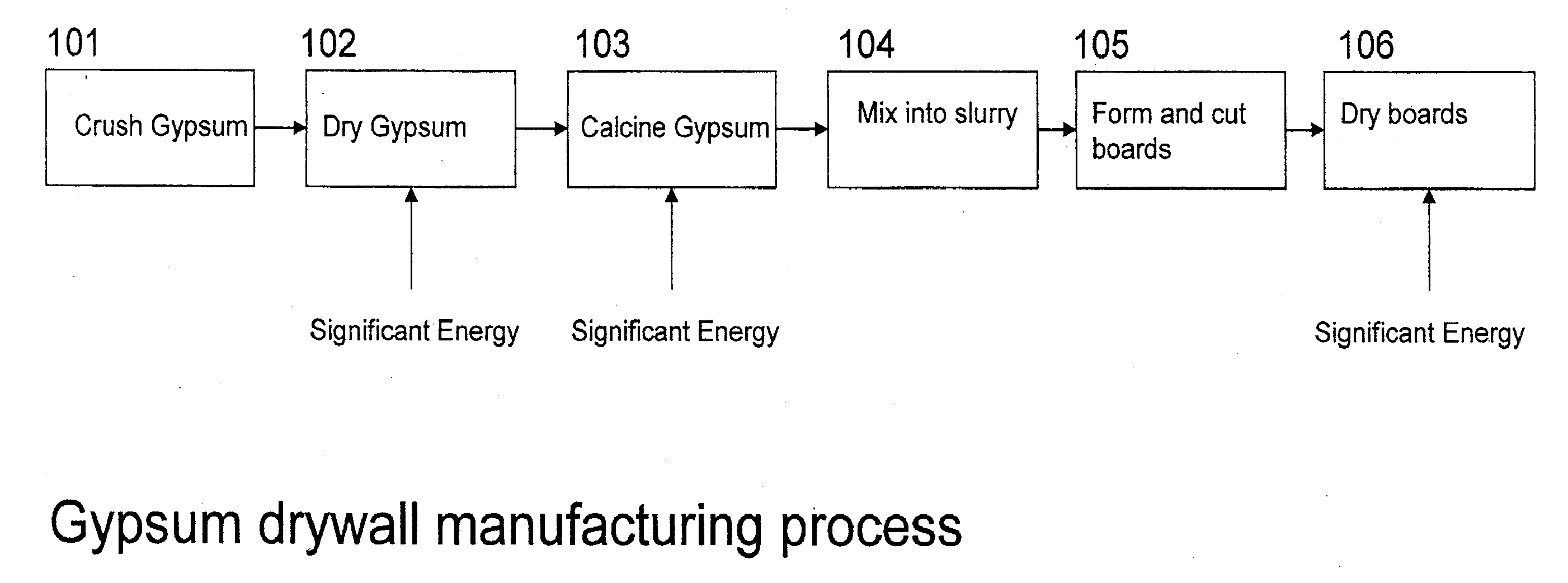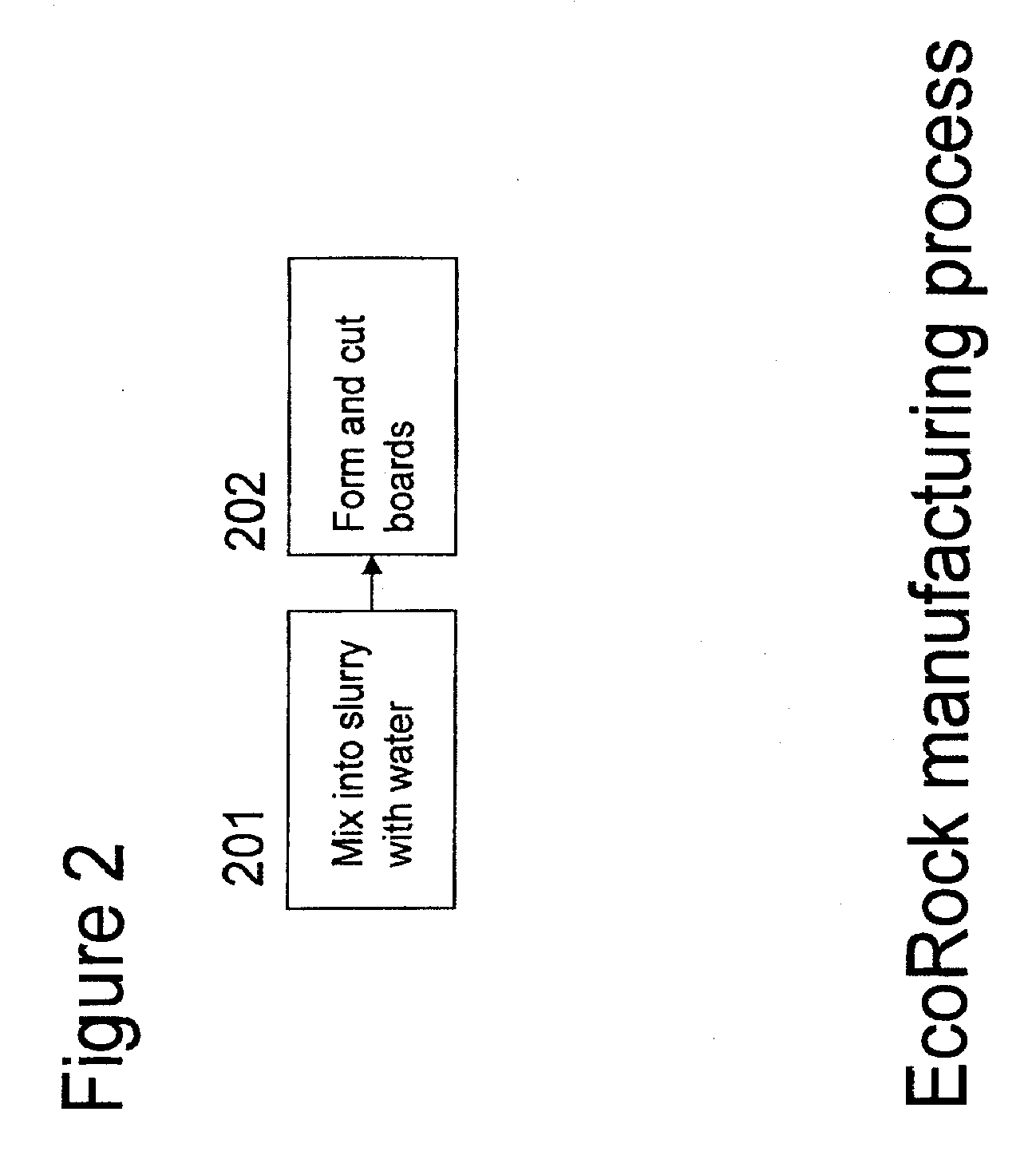Low Embodied Energy Wallboards and Methods of Making Same
a wallboard and low-embodied energy technology, applied in the direction of ceramicware, sustainable waste treatment, solid waste management, etc., can solve the problems of reducing the embodied energy of the process itself, requiring significant energy, and few other building materials exist today, so as to reduce the embodied energy and reduce the greenhouse gas emissions
- Summary
- Abstract
- Description
- Claims
- Application Information
AI Technical Summary
Benefits of technology
Problems solved by technology
Method used
Image
Examples
example 1
[0055]In one embodiment of the present invention, a dry mix of powders is prepared by mixing ground blast furnace slag, kiln dust, fly ash, pH modifier, accelerator and fibers to form the dry mix. Then, water containing a liquid dispersant is added to the dry mix followed by the addition of generated foam resulting in the following materials by approximate weight in percentages:
Slag49.8%Kiln Dust21.8%Fly Ash Type C14.9%pH Modifier11.8%Accelerator1.1%Fibers0.2%Foamer0.3%Water Reducer0.1%
[0056]Slag, kiln dust and fly ash type C combine for a total post-industrial waste content of 86.4% and the self-reacting hardening process begins, which in this case is started by the pH modifier, powdered sodium sesquicarbonate which is derived from natural trona ore. Water, equivalent to 46.2% of the above materials by weight, is added to form a slurry or generate foam. Along with the foam, the unreacted components materials form a filler in the slurry. The fibers add flexural strength to the core ...
example 2
[0062]In another embodiment, the same amounts of dry powders and liquids as in Example 1 are mixed together in the same proportions, but the amount of accelerator added is doubled. In this case, the reaction occurs much more rapidly such that the boards may be cut and removed in under 2 minutes.
Slag49.25%Kiln Dust21.55%Fly Ash Type C14.74%pH Modifier11.67%Accelerator2.20%Fibers0.20%Foamer0.30%Water Reducer0.10%
example 3
[0063]In another embodiment, the same proportions of materials as in Example 1 are mixed together, but the foam is substituted with ceramic microspheres, which are hollow spheres derived from fly ash. This produces a board of increased strength and weight. This board utilizes even more recycled materials and thus may cater even more to national environmental building rating systems such as LEED, developed by the United States Green Building Council.
Slag49.80%Kiln Dust21.80%Fly Ash Type C14.90%pH Modifier11.80%Accelerator1.10%Fibers0.20%Microspheres0.30%Water Reducer0.10%
PUM
| Property | Measurement | Unit |
|---|---|---|
| thickness | aaaaa | aaaaa |
| embodied energy | aaaaa | aaaaa |
| temperatures | aaaaa | aaaaa |
Abstract
Description
Claims
Application Information
 Login to View More
Login to View More - R&D
- Intellectual Property
- Life Sciences
- Materials
- Tech Scout
- Unparalleled Data Quality
- Higher Quality Content
- 60% Fewer Hallucinations
Browse by: Latest US Patents, China's latest patents, Technical Efficacy Thesaurus, Application Domain, Technology Topic, Popular Technical Reports.
© 2025 PatSnap. All rights reserved.Legal|Privacy policy|Modern Slavery Act Transparency Statement|Sitemap|About US| Contact US: help@patsnap.com



